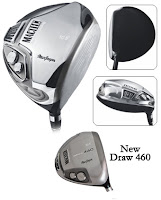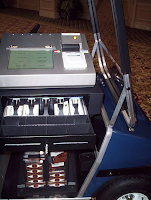
Blog? What the heck is that? Technowhat? RSS feed? Is the professor speaking alien?
That was my first thought way back in April when I started my Management Information Systems Course at Universite de Moncton.
I had heard of blogs, but create one myself, maintain, and publish articles to it, NO WAY! Philippe, our instructor, has lost it!
That was my first thought way back in April when I started my Management Information Systems Course at Universite de Moncton.
I had heard of blogs, but create one myself, maintain, and publish articles to it, NO WAY! Philippe, our instructor, has lost it!
I started off by going to blogger.com as Philippe had suggested. This helped alot.
Well, after three weeks and nine articles I can truly say I have been surprised. The first weekend when I sat in front of my computer and tried to figure out how the heck I was supposed to set everything up I may have gone a little greyer. But now I am getting the hang of things. I am even starting to enjoy “blogging”.
I took an approach that would be of interest to me. I tried to write articles that would relate topics covered in the course to the golf industry, my industry. I touched on several different easy that the advances in technology have both helped and hurt the golf industry. It is amazing how many topics can be covered by approaching the subject this way.
Over the duration of the course I have written of ways to book golf lessons, other blogs by a friend of mine who now plays on the Nationwide Tour in the United States, to RFID tags, which I had never heard of before but am very excited about.
When I started I considered myself to be at least somewhat up-to-date on technology. I wasn’t quite as current as I thought. I have learned a lot from creating and maintaining this blog. It has opened my eyes to a new way to communicate. It can be integrated into a company to communicate and exchange ideas about projects and company news. I am involved with several organizations and I feel that this would be a good tool for some of these organizations to use. I am going to suggest it in a few instances, and now because of this assignment I will be “in the know” about blogs if I have to participate in one for work or for some of my work with these organizations.
Well, after three weeks and nine articles I can truly say I have been surprised. The first weekend when I sat in front of my computer and tried to figure out how the heck I was supposed to set everything up I may have gone a little greyer. But now I am getting the hang of things. I am even starting to enjoy “blogging”.
I took an approach that would be of interest to me. I tried to write articles that would relate topics covered in the course to the golf industry, my industry. I touched on several different easy that the advances in technology have both helped and hurt the golf industry. It is amazing how many topics can be covered by approaching the subject this way.
Over the duration of the course I have written of ways to book golf lessons, other blogs by a friend of mine who now plays on the Nationwide Tour in the United States, to RFID tags, which I had never heard of before but am very excited about.
When I started I considered myself to be at least somewhat up-to-date on technology. I wasn’t quite as current as I thought. I have learned a lot from creating and maintaining this blog. It has opened my eyes to a new way to communicate. It can be integrated into a company to communicate and exchange ideas about projects and company news. I am involved with several organizations and I feel that this would be a good tool for some of these organizations to use. I am going to suggest it in a few instances, and now because of this assignment I will be “in the know” about blogs if I have to participate in one for work or for some of my work with these organizations.





